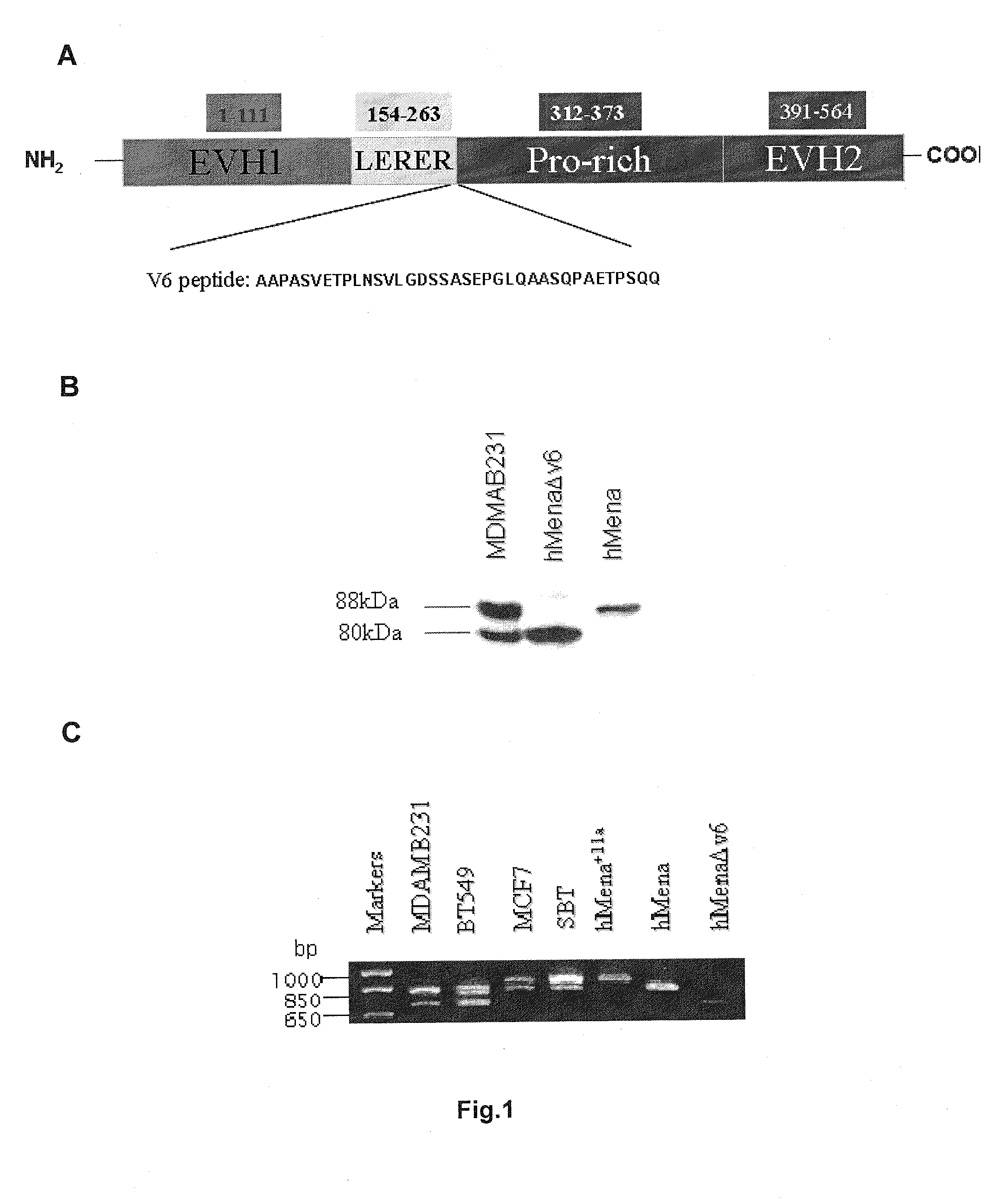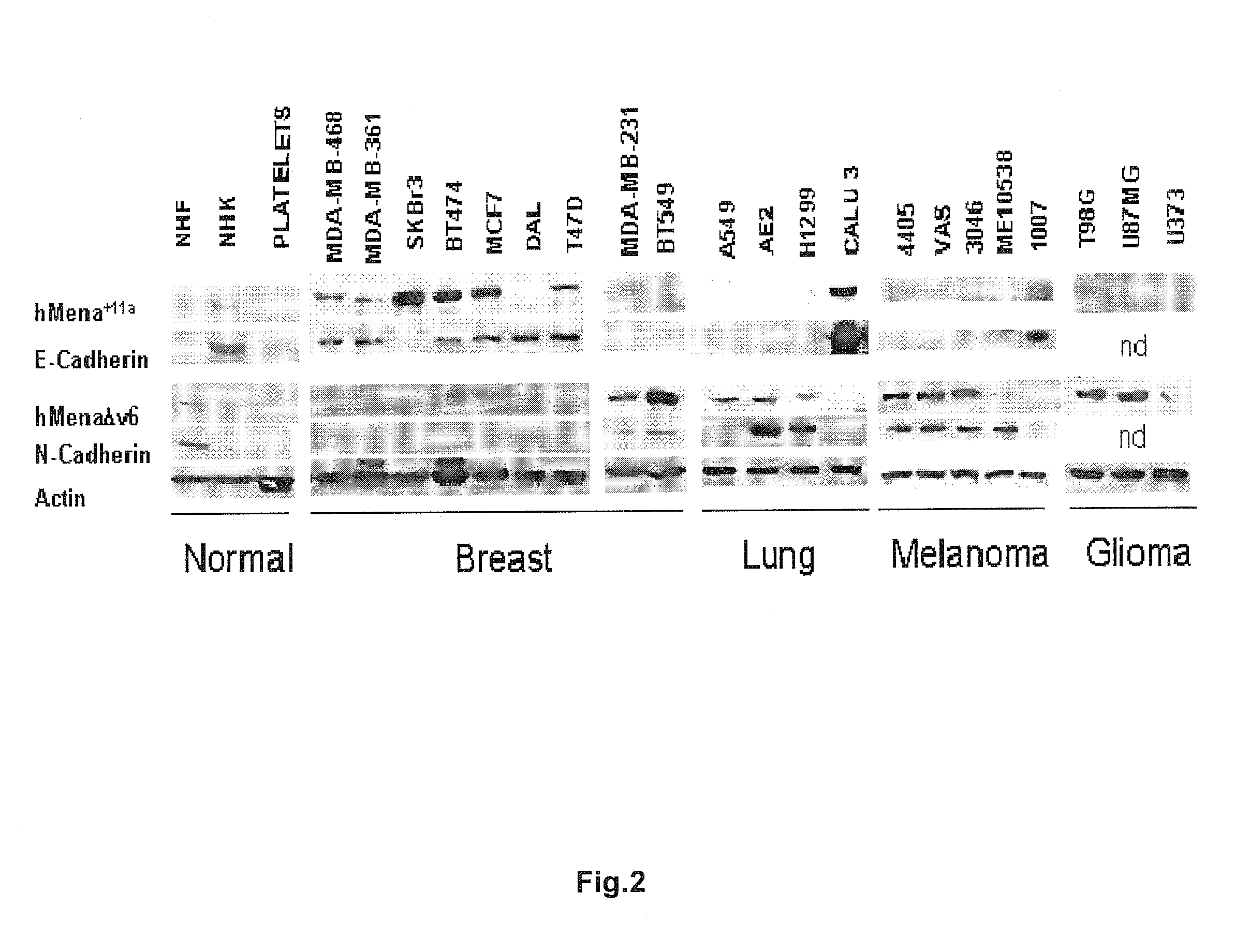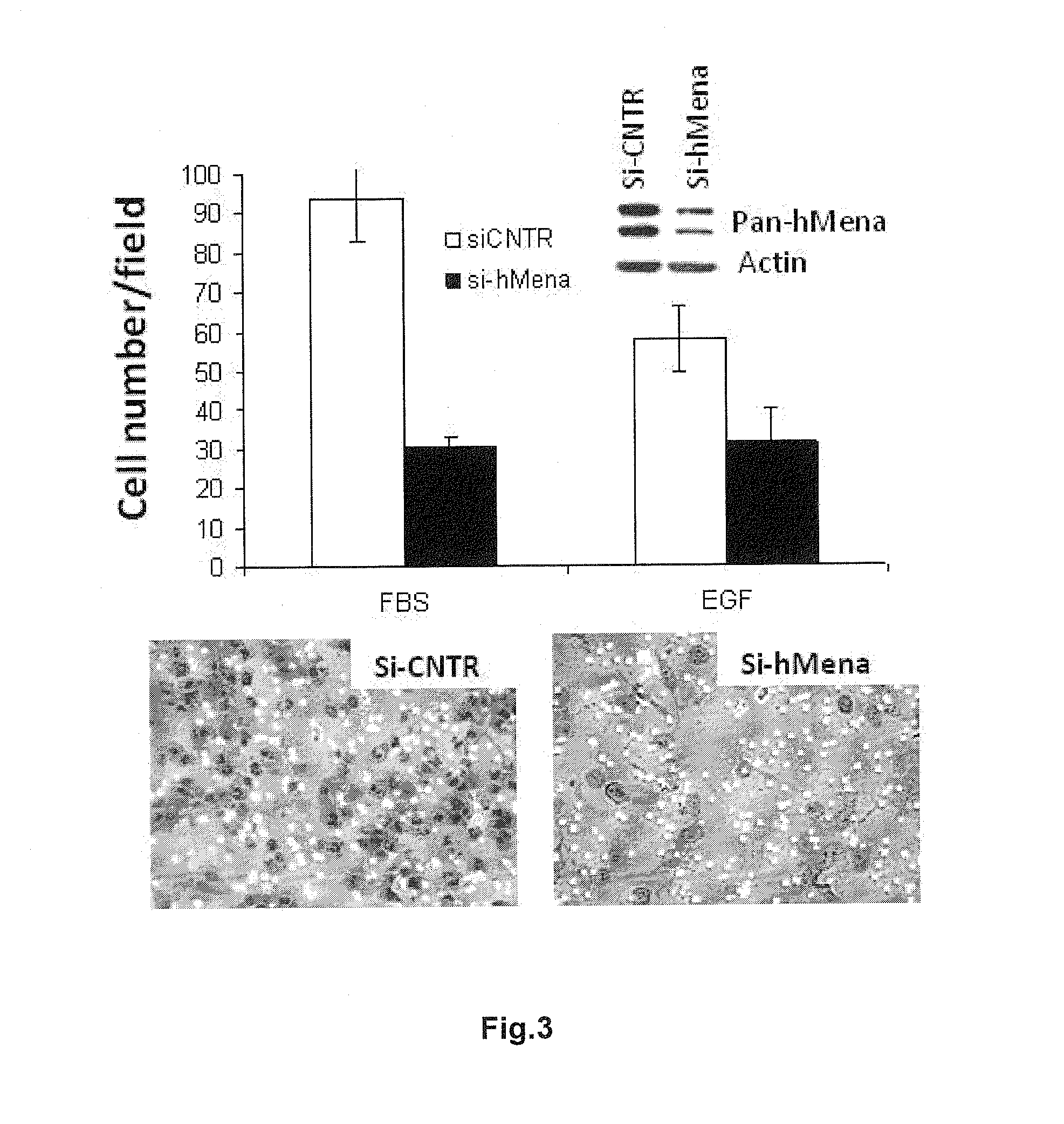New markers for the epithelial and proliferative or mesenchymal invasive phenotype of human neoplasias
a technology of epithelial and mesenchymal invasive phenotype and new markers, which is applied in the field of new ena/vasp protein isoforms, can solve the problem of no molecular markers or pathologic prognostic criteria capable of predicting the clinical evolution of tumour lesion in human patients
- Summary
- Abstract
- Description
- Claims
- Application Information
AI Technical Summary
Benefits of technology
Problems solved by technology
Method used
Image
Examples
example 1
Molecular Cloning and Characterization of hMenaΔv6 Coding Sequence
[0178]RT-PCR experiments on the breast cancer cell line MDA-MB-231 with two primers designed on the human Mena coding sequence and possessing the ATG and the stop codon respectively were performed. PCR products sequencing revealed that these cells express hMena (1713 nt) and in addition, a not yet described transcript of 1602 nucleotides from the ATG to the stop codon. This sequence is identical to hMena, but lacks the internal exon 6 of 111 nucleotides, thus we named this splice variant hMena Δv6 (GenBank, Accession: 1030575), SED ID NO 1.
[0179]hMena Δv6cDNA encodes a protein of 533aa (SEQ ID 2) without an internal peptide of 37aa located between the LERER and the Proline-rich region of hMena (FIG. 1). The absence of this peptide physically approaches, in the protein, the LERER domain with the pro-rich domain. Upon protein alignment, hMena Δv6displays an identity of 88% with the 526aa Rattus norvegicus ENAH(NCBI Acce...
example 2
hMena11a and hMena Δv6 are Alternatively Expressed and Correlate with an Epithelial and Mesenchymal Phenotype Respectively
[0181]We then analyzed by RT-PCR experiments the expression of hMena, hMena11a and hMenaΔv6 by two primers located in the exons 5 and 12 respectively (MTC1f; MTC4r) on a panel of breast cancer cell lines. Whereas hMena is always present, the two splice variants hMena11a and hMena Δv6 are mutually exclusive expressed (FIG. 1 panels B, C). As shown in the FIG. 1, two luminal breast cancer cell lines MCF7 and SBT express hMena11a and not hMena Δv6, which is conversely present in basal breast cancer cells MDA-MB-231 and BT549, lacking the epithelial hMena11a isoform, suggesting that the hMena Δv6 expression is peculiar of mesenchymal phenotype.
[0182]At protein level the characterization of hMena isoform expression lines with specific antibodies we produced demonstrate, in a large panel of cell, that hMena11a and hMena Δv6 correlate with an epithelial or mesenchymanl ...
example 3
hMena11a Transfection Inhibits Matrigel Invasion of hMena11a Negative Breast Cancer Cells
[0185]In order to understand whether the lack of hMena11a contributes to the invasive and migratory behaviour of hMena Δv6 expressing cells, we have transfected MDA-MB-231 cells with hMena11a. Matrigel invasion assays, demonstrate a very significant inhibition of invasion in MDA-MB-231-hMena11a transfected cells respect to the control (FIG. 6 panel A). In addition, results of wound healing migration assay clearly show that, in contrast to the behaviour of control cells (pcDNA3), MDA-MB-231-hMena11a transfected cells do not scatter and do not migrate into the wound either after 24 h or, more evident after 48 h. A significant reduction of the invasive properties determined by hMena11a transfection was also observed in the highly invasive BT549 cells, as shown in FIG. 6 panel B.
[0186]Immunofluorescence analysis (FIG. 6 panel D) show cytoskeletal changes following the exogeneous expression of hMena1...
PUM
 Login to View More
Login to View More Abstract
Description
Claims
Application Information
 Login to View More
Login to View More - R&D
- Intellectual Property
- Life Sciences
- Materials
- Tech Scout
- Unparalleled Data Quality
- Higher Quality Content
- 60% Fewer Hallucinations
Browse by: Latest US Patents, China's latest patents, Technical Efficacy Thesaurus, Application Domain, Technology Topic, Popular Technical Reports.
© 2025 PatSnap. All rights reserved.Legal|Privacy policy|Modern Slavery Act Transparency Statement|Sitemap|About US| Contact US: help@patsnap.com



